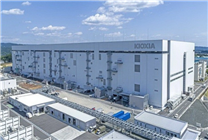Memory Prices Soar: Impact on Consumers and the Tech Industry
Summary:
- Rising memory prices driven by AI demand are reshaping the tech landscape.
- Significant declines are projected for smartphone and laptop shipments by 2026.
- Consumers may face higher costs as tech companies adapt to increased production expenses.
The memory market is currently witnessing a dramatic surge in prices, drawing parallels to gold’s historical value increase. Liu Haoran, a designer with One Processing Industry, noted that memory prices are escalating at an unprecedented rate, surpassing gold’s price increase.
Causes Behind Rising Memory Prices
The principal catalyst for this surge is the insatiable demand for High Bandwidth Memory (HBM) from AI technologies, which has monopolized available DRAM production capacity. This increase in demand has not only affected DRAM but has also led to a squeeze on NAND flash memory production, further exacerbating the situation.
According to a recent report from TrendForce, the memory market is projected to enter an upward cycle by 2026. This cycle is expected to prompt sales costs for complete devices to rise, ultimately affecting consumer prices.
Consequences for Technology Production
In light of these developments, TrendForce has revised its forecasts for smartphone and laptop production and sales volumes for 2026. Previously projected annual growth rates of 0.1% for smartphones and 1.7% for laptops have been adjusted to reflect anticipated declines of 2% and 2.4%, respectively. Should the supply-demand imbalance persist or pricing strategies lead to further increases, there remains substantial potential for further downward revisions in these projections.
Industry Response
During a recent earnings call at Xiaomi, Lu Weibing, the company’s partner and president, discussed the long-term nature of the rising memory costs. He attributed the ongoing increase primarily to the burgeoning demand stemming from AI, rather than the conventional cyclical fluctuations typical in the mobile phone and laptop sectors.
In response to these challenges, Xiaomi has taken preemptive measures by entering into full-year supply agreements with its partners for 2026. This strategic move aims to mitigate any potential supply disruptions and stabilize costs. Additionally, there are plans to adjust pricing and enhance product structures to navigate the cost pressures associated with rising memory prices.
Implications for Consumers
Consumers are set to feel the ramifications of these price hikes in two significant ways:
-
Increased Purchase Thresholds: The high costs of memory will undoubtedly elevate the baseline prices for new devices.
- More Pronounced Increases in Large-Memory Versions: The demand for devices equipped with larger memory capacities will likely see even steeper price escalations.
It is anticipated that the overall price rise of new smartphones in 2026 will be a highly probable occurrence. For those looking to make a switch or upgrade their devices—especially in the mid-to-high-end market—timing is critical. The latter half of 2025 may present one of the last opportunities to purchase devices at more favorable prices before the anticipated increases take effect.
As the landscape of technology continues to evolve, particularly with the rise of AI and increased demand on memory resources, stakeholders in the industry and consumers alike must remain aware of these shifts. The memory market’s current trajectory not only impacts production and sales forecasts but also ultimately governs consumer choices in an ever-changing technological environment.
In summary, the rapid ascent of memory prices is a reflection of broader trends within the tech industry, anchored by AI demands. Companies are strategically aligning their production capacities to weather this storm, while consumers should remain proactive in their purchasing decisions, as the near future promises to bring notable changes to pricing dynamics.
By staying informed and strategically navigating the evolving memory market, both consumers and industry players can better position themselves to cope with the upcoming changes that lie ahead.






